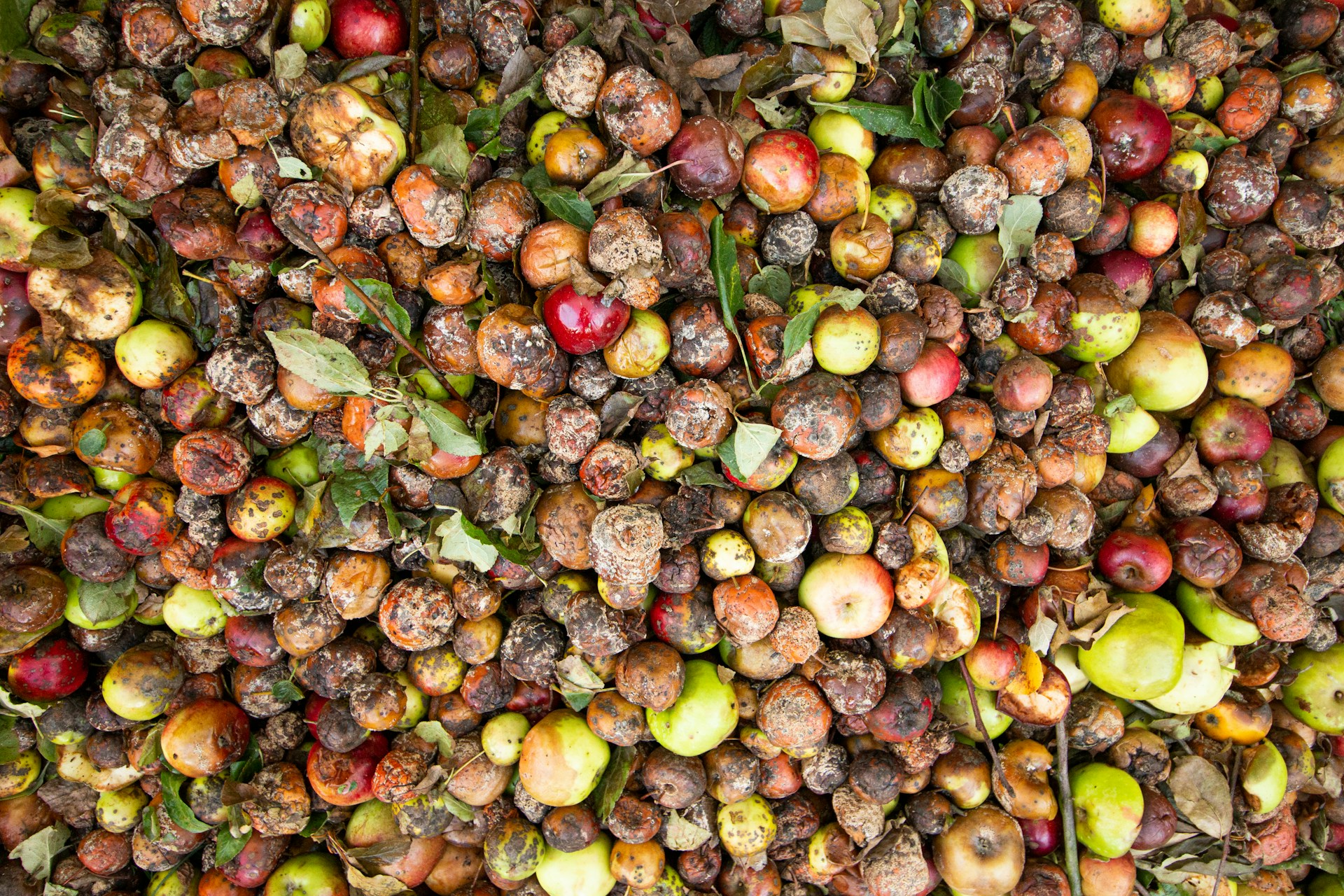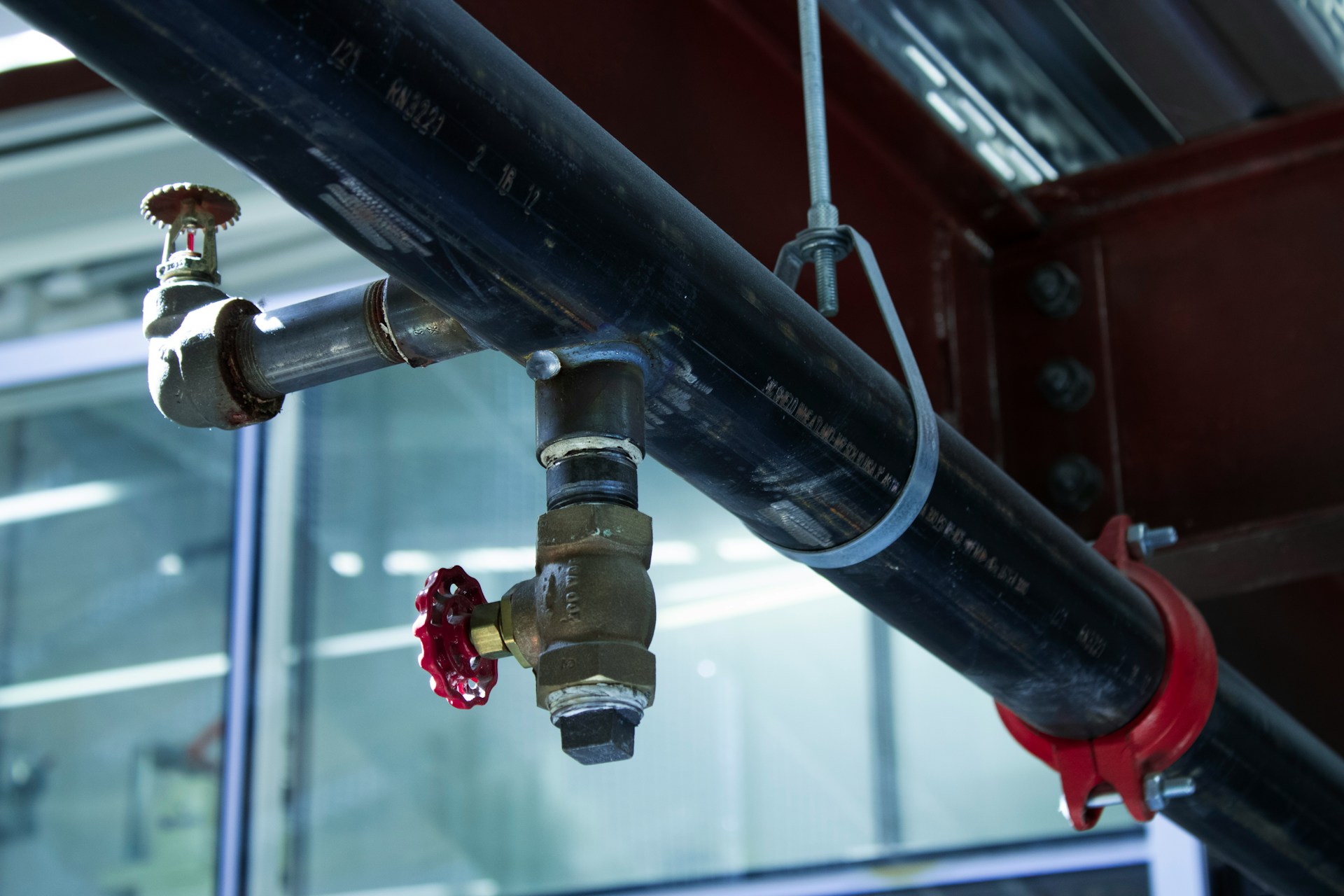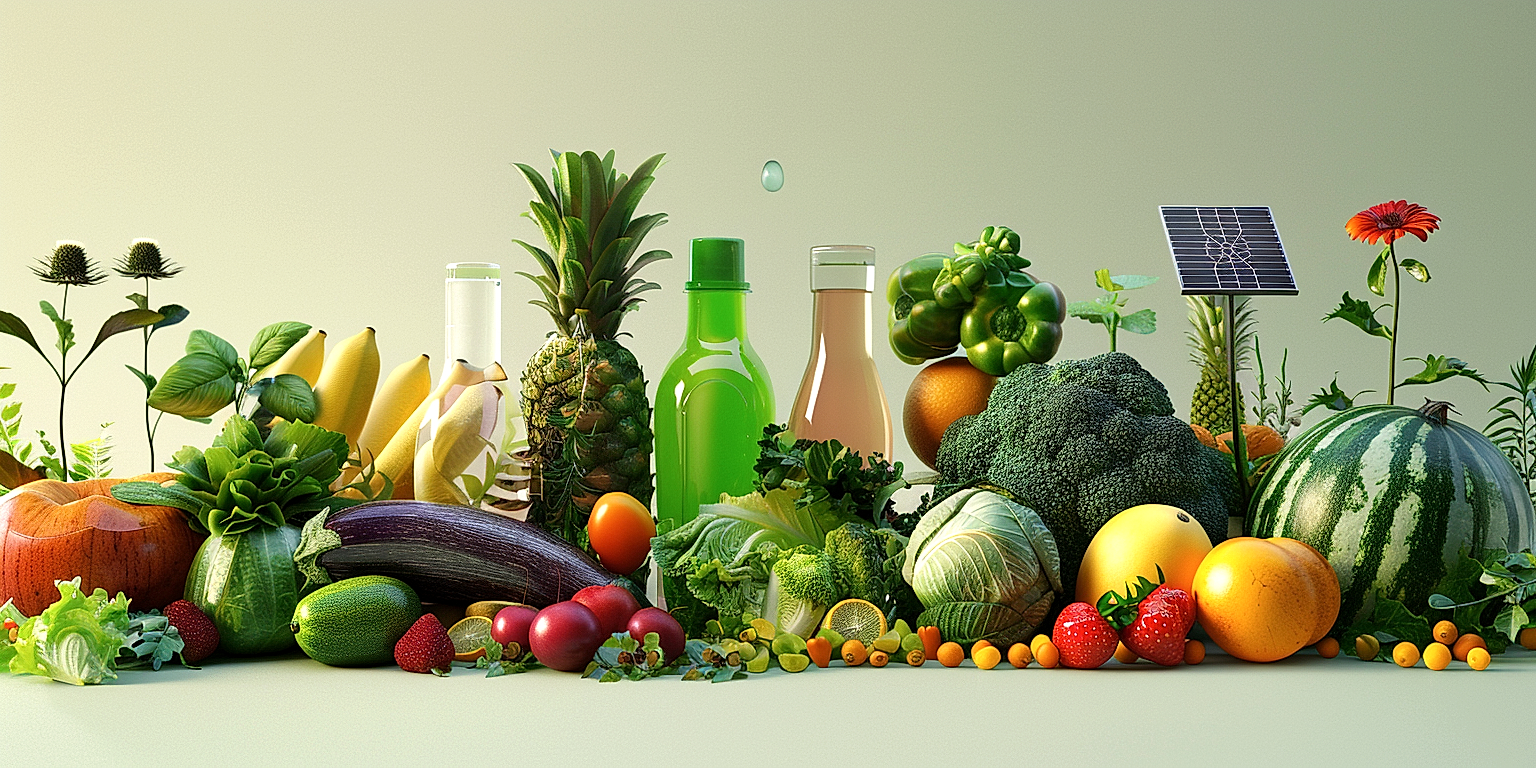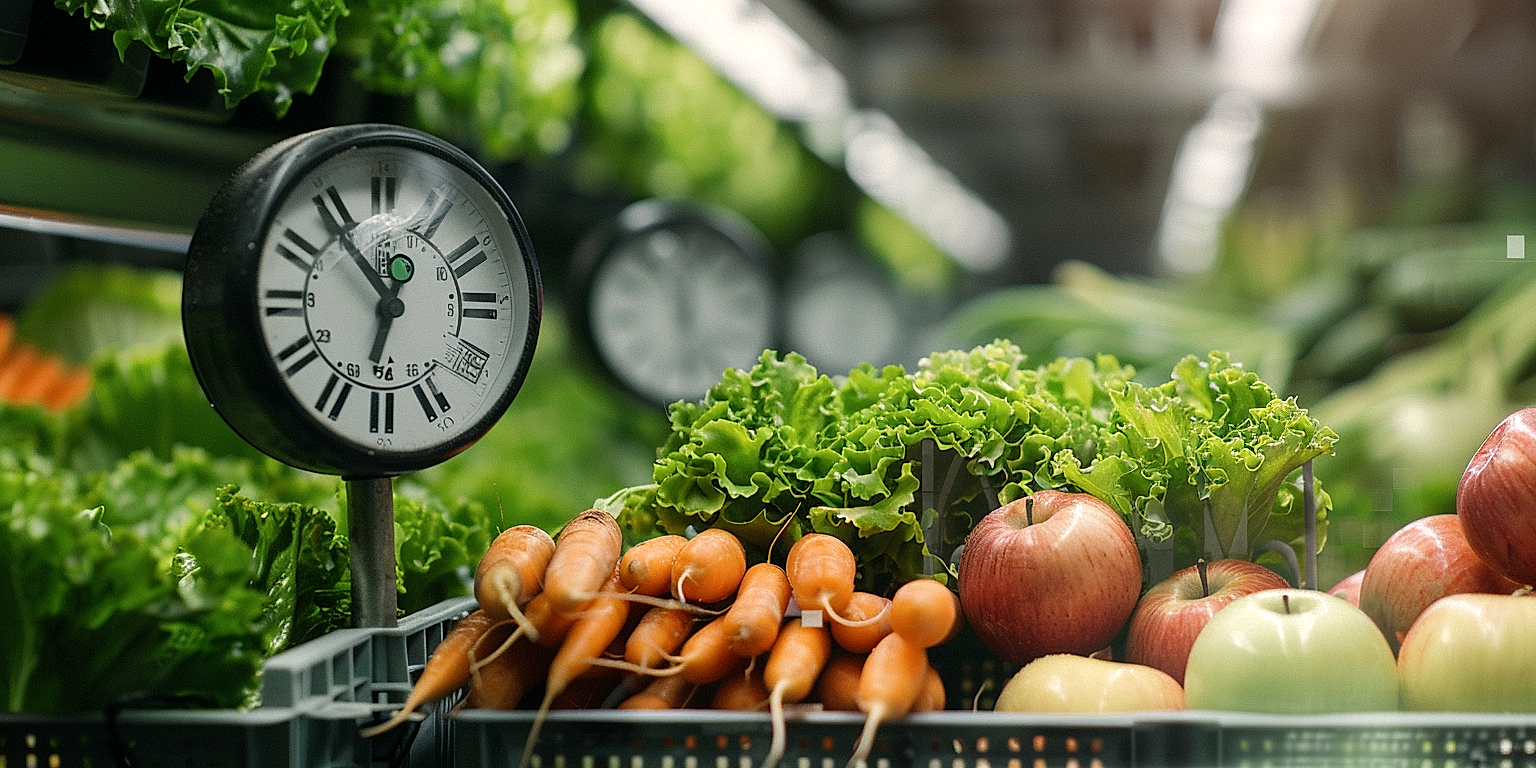In the rapidly evolving global environment, implementing measures for proper waste management has become critical.
Particularly in produce processing, where the volume of waste generated is significant, such measures are no longer optional, but imperative.
Notably, the focus is now shifting from simply managing waste to doing so in a sustainable manner.
This discussion delves into various strategies being adopted worldwide.
Drawing upon industry reports, academic research and case studies, a comprehensive picture of effective techniques will be provided.
Being aware of these practices will certainly contribute towards your proactive role in fostering a cleaner, healthier planet.
Contents
- Techniques For Sustainable Waste Management In Produce Processing
- 1. Use of Biodegradable Packaging Materials.
- 2. Implementation of waste-to-energy technologies
- 3. Promotion of Efficient Water Use
- 4. Composting Organic Waste for Soil
- 5. Reusing or recycling processing byproducts.
- 6. Conducting Regular Waste Audits
- 7. Implementation of in-house reduce/reuse/recycle programs
- The Bottom Line
Techniques For Sustainable Waste Management In Produce Processing
1. Use of Biodegradable Packaging Materials.
In the context of sustainable waste management, one of the most important strategies is the use of biodegradable packaging materials in produce processing.
Biodegradable packaging materials, unlike their non-biodegradable counterparts, are designed to disintegrate into natural elements under specific environmental conditions, greatly reducing the negative impact on the environment.
By integrating biodegradable packaging into the produce processing cycle, businesses can significantly minimize the volume of waste that ends up in landfill sites.
The shift to biodegradable packaging also contributes substantially to the global effort of reducing greenhouse gas emissions, as these materials typically have lower carbon footprints compared to traditional packaging materials.
Biodegradable packaging materials can be derived from a variety of renewable resources, such as corn starch, PLA (Polylactic Acid), and recycled paper.
Also, they are typically designed for compatibility with existing waste management systems like composting, biological treatment, and even incineration.
However, successful implementation of biodegradable packaging in produce processing does require a considerable initial investment. This includes adapting manufacturing processes and educating consumers about the proper disposal of such packaging.
Despite the initial cost, many businesses are increasingly recognizing that the long-term environmental benefits and potential cost savings outweigh the upfront expenses.
Apart from its environmental benefits, using biodegradable packaging can also enhance a company’s public image, as consumers are becoming more environmentally conscious and often prefer brands that demonstrate a commitment to sustainability.
Additionally, in many regions, businesses are faced with rigorous regulatory pressures to minimize waste generation. So, shifting to biodegradable packaging can also help businesses comply with these regulations and avoid potential fines.
However, it’s also important to note that not all biodegradable materials are created equal, and their environmental impact can vary significantly based on the raw materials used, manufacturing process, and disposal method.
Therefore, in order to extract the maximum benefits out of biodegradable packaging, businesses should consider working with packaging suppliers that hold credible certifications for their biodegradable products.
Moreover, they should also ensure to optimize their packaging design for minimal material use, while still maintaining the required functionality.
On the whole, the use of biodegradable packaging in produce processing offers tangible benefits for businesses, consumers, and the environment and is an effective technique for sustainable waste management.
With the current pace of technological advancement, the use of biodegradable packaging materials will undoubtedly continue to expand and improve, promising even better waste management outcomes in the future.
2. Implementation of waste-to-energy technologies
The implementation of waste-to-energy technologies is a powerful approach that can promote sustainable waste management in produce processing.
These technologies primarily involve converting waste materials into usable forms of energy like heat or electricity.
Combustion, gasification, and anaerobic digestion are some of the primary methods used in waste-to-energy technologies.
Waste-to-energy systems do not just minimize waste but also produce valuable resources in the process.
This dual benefit makes waste-to-energy technologies a significant strategy for achieving sustainability in waste management.
Considering the high amounts of organic waste produced in the agricultural sector, anaerobic digestion, in particular, can be an effective waste-to-energy technology.
This method involves breaking down organic waste materials in the absence of oxygen, thus producing biogas which can be used as a source of renewable energy.
Another advantage of waste-to-energy technologies is the potential reduction in greenhouse gas emissions.
By diverting waste from landfills, which are significant contributors to methane emissions, these technologies can help combat climate change.
Furthermore, waste-to-energy technologies can boost economic sustainability in produce processing.
The sale of energy generated from waste can provide an additional income stream, promoting economic resilience in the sector.
One key challenge in implementing waste-to-energy technologies, however, is the necessity of significant initial investment.
Substantial infrastructure and operations costs can pose barriers, especially for smaller businesses and farms.
Despite these potential obstacles, the long-term environmental, social, and economic benefits of waste-to-energy technologies make them a crucial strategy for sustainable waste management in produce processing.
Therefore, concerted efforts should be made to promote their adoption across the sector.
These could include government incentives or funding schemes to help offset startup costs and drive growth in waste-to-energy options.
3. Promotion of Efficient Water Use
The promotion of efficient water use is an integral technique in achieving sustainable waste management in produce processing.
Water, being a valuable and limited resource, must be protected, conserved and used optimally, especially in the agro-processing industry where it serves multiple purposes.
One of the ways to promote efficient water use is through the implementation of water-saving technologies in facilities.
These technologies can range from simple and low-cost measures such as installing water-efficient fixtures and appliances, to more complex and high-end solutions such as automated water management systems.
Moreover, performing regular water audits can help to identify areas of inefficiency, where water consumption can be significantly reduced.
Educating employees about the importance of water conservation and involving them in water-saving initiatives can also contribute positively to this cause.
Another important aspect of water use in produce processing is effective wastewater management.
The waste water generated from produce processing, after appropriate treatment, can be reused for non-potable purposes such as irrigation, washing, and cleaning, thereby reducing the overall demand for fresh water.
On that note, the reuse of process water can further promote the circular economy concept, where waste is viewed as a resource rather than a liability.
Utilizing advanced water treatment technologies, facilities can treat and recycle their wastewater, making them less dependent on municipal water supply and more environmentally responsible.
Indeed, the implementation of water efficiency measures not only saves water, but also reduces the energy required for water and wastewater treatment processes and reduces the quantity of wastewater produced.
This approach, therefore, results in multiple environmental and economic benefits.
The promotion of efficient water use in produce processing, therefore, is a key strategy towards sustainable waste management.
In this quest for efficient water use, it is important to consider factors such as the type of produce being processed, the amount of water used in various processing stages, the quality of wastewater generated, and the feasibility of its treatment and reuse.
Overall, it is crucial that the industry moves towards responsible and efficient water use, where every drop of water is exploited to its maximum potential, and the environmental impacts are minimized.
4. Composting Organic Waste for Soil
As a produce company, a significant part of your waste would be organic waste.
This includes discarded vegetables, fruits, and other plant matter that is left over after processing.
Instead of merely discarding this organic waste, it can be transformed into compost for use in farms or gardens.
Composting is a simple, natural process that involves the breakdown of organic materials by microorganisms.
This process results in a rich, earthy substance that is perfect for enriching soil.
Not only does this cut down on the waste that you need to dispose of, but it also reduces the demand for chemically-produced fertilizers.
Implementing composting as a waste management strategy is sustainable and beneficial for the environment.
It is a cycle of replenishment that returns nutrients to the soil, encouraging the growth of robust, healthy plants.
To make compost, a careful balance of green waste (wet waste like food scraps) and brown waste (dry waste like leaves and twigs) is needed.
These elements are put together in a compost bin or pile, and then the microorganisms do their job.
Turning the compost pile every few weeks will help to maintain the process, ensuring that oxygen is evenly distributed and the composting process happens efficiently.
But this isn’t something you just start doing without a plan.
Composting requires knowledge and management, and if done improperly can create foul smells and attract pests.
Therefore, it’s important to educate your workers about the process of composting, and its importance to the environment and sustainability.
Expanding into composting can not only reduce your waste output, but also provide an additional income stream if the compost is sold.
Overall, composting organic waste as part of your sustainable waste management strategy can improve your business sustainability credentials, reduce waste and possibly create an additional line of revenue.
5. Reusing or recycling processing byproducts.
In the realm of produce processing, reusing or recycling products that are otherwise considered waste can play a significant role in improving sustainability.
This method of waste management not only lessens the disposal load but also optimizes production efficiency.
The use of byproducts in other applications often reveals new and valuable resources, thereby driving an eco-friendly and cost-effective mode of operation.
For example, in a cannery, vegetable scraps and peels that are leftover from processing can be converted into animal feed or compost, rather than being discarded as waste.
This reutilization of organic matter serves dual purposes: reducing waste and creating a new product of value.
Even more, the byproducts that may initially appear unusable or waste can have hidden potential for redistribution in different industry sectors.
In the food and beverage industry, for instance, spent grains from breweries or fruit pulp from juice processing plants can be repurposed into biofuels or incorporated into bakery and confectionery products.
Such practices not only add value but also reduce environmental impacts of processing operations.
Furthermore, by reusing and recycling these byproducts, companies can significantly minimize their dependence on landfills, which are notorious contributors to global environmental degradation.
Implementing a robust recycling program will require significant initial investment and effort, but the long-term benefits make it worth it.
In fact, it is becoming increasingly common for processing plants to outsource the management of their byproducts to companies that specialize in recycling and reusing such materials.
Such partnerships not only elevate the levels of sustainability in produce processing but also create new financial and employment opportunities.
On top of these, the brands that manage their waste responsibly often enjoy a positive public image, as consumers are becoming more aware and more demanding of sustainable practices.
In summary, reusing or recycling processing byproducts in the produce processing chain is an important strategy for sustainable waste management.
It is a forward-thinking practice that transforms what was once considered waste into valuable resources.
Therefore, it helps to support both the economic and environmental aspects of sustainability.
6. Conducting Regular Waste Audits
Conducting regular waste audits is an essential aspect of sustainable waste management in produce processing.
It involves systematically assessing the types and volumes of waste generated in a facility to inform waste reduction strategies.
In other words, a waste audit is a detailed, comprehensive analysis of a site’s waste stream.
A well-conducted audit provides valuable insights into the materials that make up your waste stream, their proportions, and how they’re being managed.
These assessments are crucial for identifying opportunities for improvements in waste management practices, including recycling, composting, and waste-to-energy processes.
The waste audit process includes several steps, with the first being the identification of all waste types generated in the facility.
Secondly, waste is sorted into categories such as organic, inorganic, recyclable, and non-recyclable materials.
Each category is then weighed and recorded to establish a clear amount of waste production.
Performing audits regularly allows for the identification of trends, potential problems, and opportunities for improvement over time.
Regular waste audits also help incorporate responsibility and accountability into an organization’s waste management strategy.
Entrusting this task to a dedicated team within the organization can ensure consistency and accuracy in the audit results.
Moreover, conducting waste audits provides a platform for employee education and involvement in waste management.
In essence, it raises staff awareness and increases engagement towards pursuing more sustainable practices.
In fact, when employees understand the implications of their actions on waste production, they are typically more committed to reducing it.
Ultimately, regular waste audits are a critical tool for making data-driven decisions in waste management and moving towards more sustainable practices in produce processing.
By keeping up with this task, businesses in the produce processing industry contribute their part in reducing negative impacts on the environment, while also realizing significant cost savings in waste disposal.
7. Implementation of in-house reduce/reuse/recycle programs
The importance of creating and implementing in-house reduce/reuse/recycle programs within the realm of produce processing cannot be understated.
These programs are essential tools in promoting sustainable waste management.
This approach keenly addresses the dual challenges of waste reduction and resource optimization.
In the heart of these programs is an environmental commitment where the key idea is to ensure that waste generated during produce processing is minimized, used efficiently, or re-introduced back into the production cycle.
Produce processing facilities generate a broad range of waste, all of which can largely be managed through in-house reduce/reuse/recycle programs.
By methodically reducing waste generation at the source, firms not only make leaps towards sustainability but also significantly cut down their operational expenses.
Through reuse, resources such as water, energy, and raw materials are utilized to their maximum potential, curtailing the need for fresh resources.
An effective recycling program, on the other hand, creates a cycle of sustainability within the operations of a produce processing firm.
Waste materials like plastic, cardboard, or organic waste, when recycled, serve as raw materials for the production of other goods or processes.
Beyond these benefits, in-house reduce/reuse/recycle programs foster an environment-centric culture within an organization.
They enable employees to embrace environmentally-friendly practices, thus playing an active role in the company’s sustainable mission.
Furthermore, by implementing these programs, firms stand to improve their corporate image and credibility in the public’s eye as socially responsible entities.
However, it’s important to note that the successful implementation of these programs requires a comprehensive understanding of the type, extent, and source of waste generated.
Equally important is to have a well-thought-out plan on how the 3 R’s (reduce, reuse, recycle) will be achieved.
This includes designating responsibilities, training the staff, and investing in required technologies or infrastructure.
The Bottom Line
To sum up, the adoption of sustainable practices within our businesses and daily routines is no longer optional, but a necessity.
Integrating environmentally friendly strategies, such as the use of biodegradable packaging materials, waste-to-energy technologies, water efficiency measures, composting, and recycling initiatives, can generate positive impacts far beyond the immediate surroundings.
It can also create a ripple effect, inspiring other entities and individuals to participate in conserving our precious resources.
Indeed, conducting waste audits and implementing comprehensive waste reduction programs further underscore our commitment to the environment.
Embracing these methods not only safeguards the planet for future generations but also establishes more resilient, profitable, and adaptable business models.
Therefore, society should vigorously and wholeheartedly adopt these practices for a sustainable and prosperous future.




